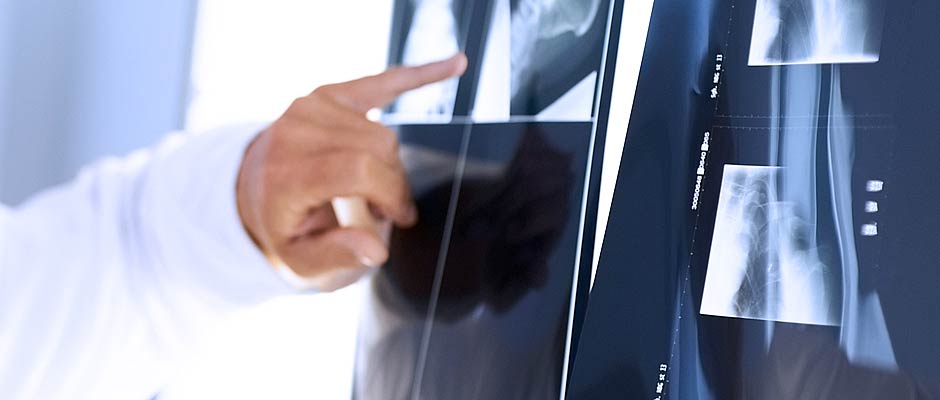
Orthopaedics
Treatment of injuries or disorders of the skeletal system and associated muscles, joints, and ligamentsA hip replacement is a common type of surgery where a damaged hip joint is replaced with an artificial one (a prosthesis).
Some common reasons why a hip joint can become damaged include:
- osteoarthritis – so-called –"wear and tear arthritis", where the cartilage inside a hip joint becomes worn away, leading to the bones rubbing against each other
- rheumatoid arthritis which is caused by the immune system (the body’s defence against infection) mistakenly attacking the lining of the joint, resulting in pain and stiffness
- hip fracture – if a hip joint becomes severely damaged during a fall or similar accident it may be necessary to replace it
Arthroplasty, a routine operation for knee pain most commonly caused by arthrisis, involves replacing a damaged, worn or diseased knee with an artificial joint.
Total knee replacement (TKR) and partial knee replacement (PKR) are two main types of the procedure.
Revision surgery, also called revision total knee or hip arthroplasty, is a procedure in which the surgeon removes a previously implanted artificial knee or hip joint, or prosthesis, and replaces it with a new prosthesis.
Osteotomy of the knee is surgery that involves making a cut in one of the bones in patient’s lower leg to relieve symptoms of arthritis.
There are two types of surgery:
Tibial osteotomy is surgery done on the shin bone below the knee cap.
Femoral osteotomy is surgery done on the thigh bone above the knee cap.
A hip osteotomy is a surgical procedure in which the bones of the hip joint are cut, reoriented, and fixed in a new position. Healthy cartilage is placed in the weight-bearing area of the joint, followed by reconstruction of the joint in a more normal position.
Two common procedures of hip osteotomy are varus rotational osteotomy and pelvic osteotomy, depending on the bone correction required.
A bone cyst is a fluid-filled hole that develops inside a bone. They can occur at any age, but most often affect children and young adults.
Large cysts can cause a bone to weaken, making it more likely to fracture (break). This can cause problems such as pain, swelling, or not being able to move or put weight on a body part.
Surgical treatment may be recommended if the cyst does not show any signs of healing or if the bone is thought to have a high risk of fracture.
Curettage and grafting is a procedure where the surgeon cuts into the bone, drains the cyst, and scrapes out the lining of the cyst; the resulting hole is then usually filled with chips of bone from another part of the body or a donor.
A knee arthroscopy is a key hole operation, which is done using the arthroscope. Small incisions (cuts) are made in the knee to allow the insertion of a small TV camera into the joint. Through another small incision, special instruments are used to remove the torn portion of meniscus while the arthroscope is used to see what is happening.
It is most commonly used to treat symptomatic tears to the menisci (sports cartilages).
An arthroscopic knee washout involves flushing the joint with fluid, which is introduced through small incisions in the knee. The procedure is often done with debridement, which is the removal of loose debris around the joint.
This surgery is done to repair an Achilles tendon that has been torn into two pieces.
One of the two types of surgery (open surgery with one large incision or percutaneous surgery with several small incisions) will be performed to sew the tendon back together.
An acromioplasty is the surgical reshaping of the acromion (the upper point of the shoulder blade ), frequently performed to treat a rotator cuff disorder (irritations in or damage to tendons around the shoulder)
Acromioplasty and rotator cuff repair may be done using either arthroscopic or open surgery.
Carpal tunnel release surgery is a procedure where the roof of the carpal tunnel, known as the carpal ligament, is cut to reduce pressure on the median nerve in the wrist.
Either open or arthroscopic surgery can be performed according to the decision of the surgeon and appropriateness.
Bunionectomy generally involves an incision in the top or side of the bunion (big toe joint) and the removal or realignment of soft tissue and bone to relieve pain and restore normal alignment to the joint.
